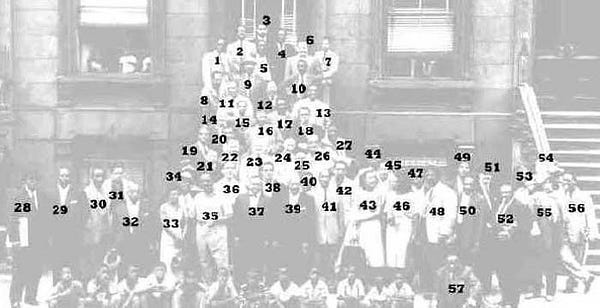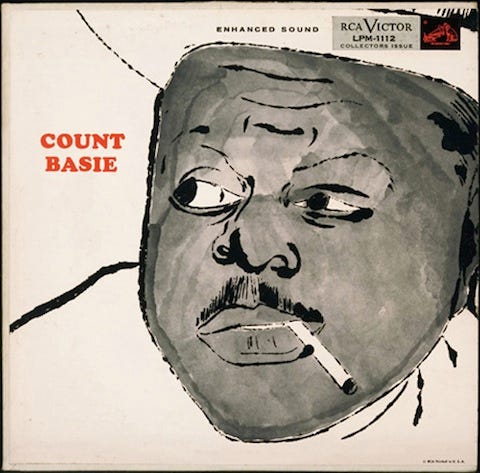Trade-offs and Triumphs #6
Issue 6: How Labor Day Got Started, The Effect of COVID19 on Families, and From the Archives of Open Culture
Hello, friends! Thank you for subscribing, and welcome to my new subscribers!
I appreciate your time and wisdom.
It is Labor Day here in the United States. If you are spending time with your loved ones and enjoying the last golden rays of summer, breathe deeply and treasure time that will not return.

If tomorrow is the first day of school - virtually or in-person - good luck! Sharpened pencils, notebook, a laptop - what more would you need to start off the school year or to keep the school year going in style?

Photo by JESHOOTS.com from Pexels
How Labor Day Got Started
But Labor Day did not become a national holiday until President Cleveland forgot about the people who elected him and had to regain their trust. Unfortunately, he made some poor choices that resulted in people dying, an upset country, and also pulled in the United States Postal Service.
Which just shows you that history seems to repeat itself.
Josh Cadorette explains the who, what, when, where, and how of the events that led to Labor Day’s becoming a national holiday in the Twitter thread below.







Thank you to Kyle Bowe for introducing me to Josh Cadorette.
The Effect of COVID19 on Families
If you ask someone about why they work hard, it usually comes down to one of two reasons (or, sometimes both):
They want to provide for their families so that they can create more memories together, and/or
They love what they do.
Families are the cornerstone of our communities, and for some (like me), sustaining our families is akin to religion. So, if you can spend time with your families during this period of social distancing, you love what you do, and you are not forced to make a trade-off between your family and earning a living, then you are fortunate.
But not all families are this blessed - whether you have a position that permits you to work from home or mandates that you come to the workplace everyday, for many who have children, childcare is the major conundrum. As children head back to school, the lack of childcare options and the realities of remote learning are hurting single parents more in terms building a financial safety net. What hurts parents hurts children and the family - according to the Pew Research Center, in 2019, an estimated 23% of American kids, or 17 million, live with a single parent, the highest share in the world.
This lack of a financial safety net has negatively impacted families for years. COVID19 may be the opportunity to change that narrative by experimenting and iterating. For example, earlier this summer, Avni Patel Thompson shared 12 ideas in the Twitter thread below to help families sustain themselves and not make a trade-off between financial security and time:

But families are more than just parents and children - there are the elders as well. There has been a lot of chatter about mature children moving back in with their parents. But as Juvoni Beckford eloquently points out, we also need to consider the elders who raised us, and the stakes get higher when that elder is a single parent who sacrificed so much so that you could achieve your dreams.

Because isolation from our families is bad for everyone - parents, children, elders, and any extended family. We need to be more proactive about childcare and eldercare options, because without nurturing potential and taking care of the past, we will not have a future.
If you are managing employees who have childcare and/or eldercare issues:
Listen, don’t respond. Make lots of mental notes.
Figure out how to support your employees and be flexible - remember, both you and your employees need to operate as rubber balls that bounce.
Prioritize and discuss both professional and personal milestones. Do this for all your teammates and for those you work with closely - remember, in this era, your team is more than just your direct reports.
Finally, remember to take care of yourself too.
I would love to hear from you about how you and your families are coping with COVID19 and social distancing - you can reach me at jennykimwop@gmail.com or on Twitter at @jennykim.
From the Archives of Open Culture - Photo of the NYC Jazz Greats and Sample Album Cover Art by Andy Warhol
Alas, I return to the city in which I grew up - New York City. Music and art were two subjects in high school I both adored and hated. I could sing but I could not play an instrument; I loved to examine and interpret art, but I could not draw at all.
It seemed that there were not trade-offs I could make to become an accomplished pianist or artist.
Luckily, I don’t need to play an instrument to enjoy listening to the jazz greats, or be able to draw to admire Andy Warhol’s album cover creations for the great jazz artists - all incredibly labor intensive but somehow seemingly easy.
Open Culture is like an attic that you can explore on a rainy day, and you are not sure what you will find. So let serendipity rule and meander through this site.



Album Cover Art by Andy Warhol


Have any questions or comments? Let’s chat!
Want to exchange some thoughts over Twitter? You can find me @jennykim
Check out my website for more: puttingittogether.blog
See you next week!
And remember to find that trade-off that will lead to that triumph this week, no matter how small, and celebrate it.



It's a tough time for so many among us, Jenny. Great insights.
Well done! Learned a lot in this letter!